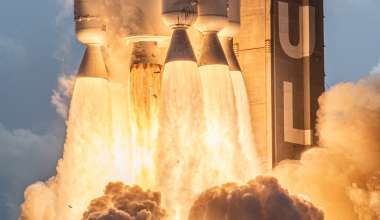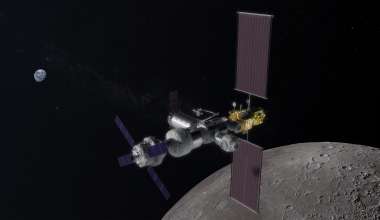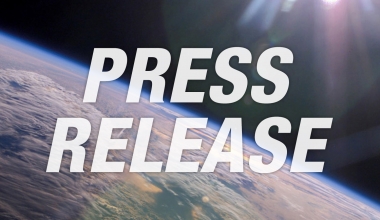It’s a little like trying to fit as many people as possible into a Nissan Leaf.
But in this case, Aerospace is overseeing the process of safely packing more than two dozen satellites into the nose cone of a giant SpaceX Falcon Heavy rocket.
The Falcon Heavy is currently the most powerful rocket in the world. It can generate about five million pounds of thrust through its cluster of three Falcon 9 rocket stages with 27 main engines -which SpaceX describes as “roughly the power of eighteen 747 aircraft.” On February 6, 2018, SpaceX staged a successful test launch of the first Falcon Heavy and sent a Tesla Roadster and mannequin named Starman into space.
在六月底,猎鹰重型将进行它的第三次飞行-carrying 25颗卫星轨道为美国军方,美国航空航天局,其他政府机构,学校和科研机构。名为STP-2,任务涉及面最多样化的群体有史以来发射到轨道上的单个运载火箭有效载荷之一。有不同形状和尺寸的二十几的有效载荷,从的Cubesats(包括一个由高中生开发)以COSMIC-2,六颗卫星台湾星座携带RS的空间气象仪器称为SSAEM其中航空航天提供任务保障和项目管理支持。另一有效载荷来自NASA,其被悬挂其绿色推进剂输液团(GPIM)来测试一个绿色替代传统的化学推进系统。
猎鹰重型将提供STP-2的有效载荷送入火箭将自身前三种不同的使命轨道变成“弃星轨道,”空间中的一个安全的地方,这是不太可能遇到其他卫星。
The Aerospace team in Albuquerque, New Mexico, is playing a major role in the flight, making sure all the satellites fit together aboard the world’s most powerful rocket. Aerospace engineers ensure the payloads don’t negatively affect each other in this complex arrangement by using a rideshare mission assurance protocol called “Do-No-Harm” (DNH). DNH is a process that focuses on ensuring no payload on a rideshare mission will negatively affect the on-orbit functionality of any other payload. The individual payloads on STP-2 are all responsible for their own mission success, but through the DNH process, Aerospace is ensuring that everyone inside the Falcon Heavy nose cone plays nice with each other.
The New Mexico Aerospace team has divided up the set of payloads so each team member is responsible for conducting the DNH assessment for their payloads, which means ensuring that the payload team meets all the necessary requirements that relate to the safety of the launch vehicle and the other space vehicles.
During this process, the team regularly consults with Aerospace’s Engineering and Technology Group (ETG) for risk assessments and analysis. Aerospace also acts as a highly responsive intermediary between the STP-2 program office and the various satellite teams, facilitating the communication of pressing issues, and raising concerns that may otherwise be lost in the swirl of such a complex team.






